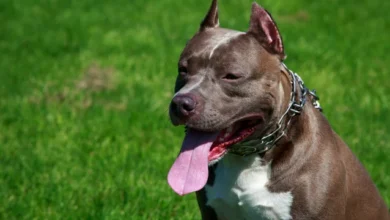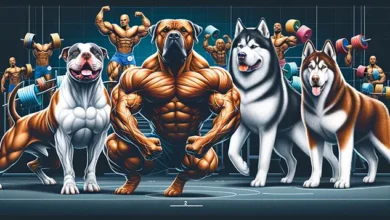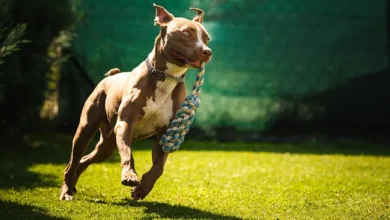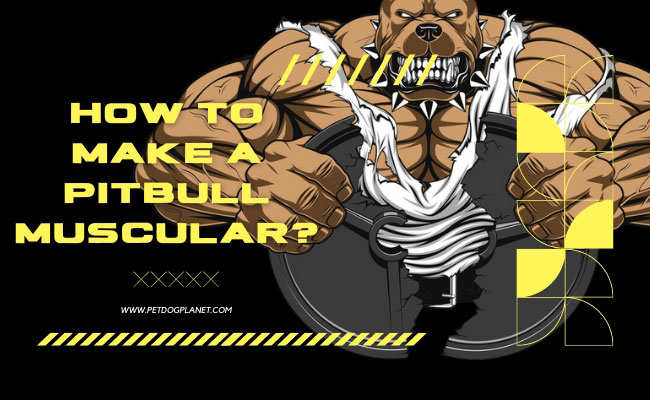
Get ready to explore the world of muscular Pitbulls, a breed that captivates dog lovers everywhere. Picture walking down the street with one of these majestic dogs by your side; their broad shoulders, thick neck, and wide chest aren’t just head-turners—they showcase their natural strength and beauty. Amazingly, Pitbulls achieve their impressive physique through genetics and an active lifestyle, not a gym.
But what’s the secret behind their muscular build? Beyond their striking appearance, Pitbulls have a rich history and a loving, gentle nature. Whether you’re a proud Pitbull parent or simply curious, join us as we uncover the mysteries behind their muscles and the softness of their hearts. Let’s celebrate the unique allure of these incredible dogs.
Table of Contents
- Why Are American Pitbulls So Muscular?
- Pit Bull Dog Breeds
- How To Make Your Pitbull Muscular
- Homemade Diet for Muscular Pitbull
- How to Build a Pitbull’s Jaw Muscle
Why Are American Pitbulls So Muscular?
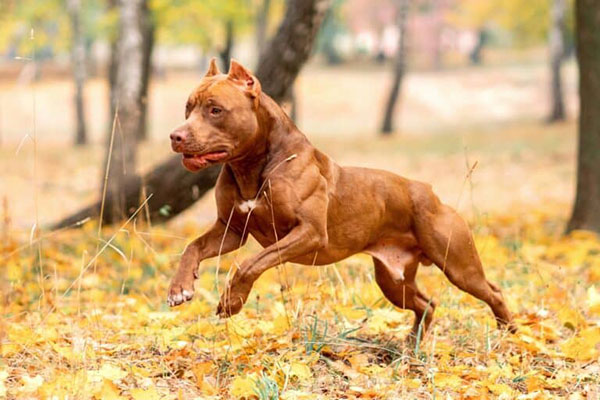
American Pitbulls are renowned for their muscular build, a characteristic that makes them stand out among dog breeds. This physical trait is not just for show; it’s a combination of genetic factors, breeding history, and lifestyle that contributes to their impressive musculature. Here’s a point-by-point breakdown of why American Pitbulls are so muscular:
1. Genetic Makeup:
Pitbulls inherit their muscular build from their ancestors. Their genetic makeup predisposes them to have a more muscular physique compared to other dog breeds. This is because they were originally bred for tasks that required strength, such as bull-baiting and farm work.
2. Selective Breeding:
Over centuries, breeders selectively bred Pitbulls for physical strength and endurance. The most muscular dogs were often chosen for breeding, perpetuating strong physical traits through generations. This selective breeding focused on enhancing characteristics like a broad chest, strong jaw, and powerful legs, contributing to their muscular appearance.
3. High Protein Diet:
A factor contributing to their muscular build is their diet. Pitbulls require a diet rich in proteins to maintain and build muscle mass. Many owners and breeders ensure their Pitbulls get a balanced diet with high-quality protein sources, aiding in muscle development and maintenance.
4. Physical Activity:
Pitbulls are naturally energetic and require regular exercise. Activities such as running, playing fetch, and agility training not only keep them fit but also promote muscle growth and stamina. Their active lifestyle is a significant factor in developing and maintaining their muscular physique.
5. Metabolism:
These dogs have a high metabolism that helps them convert nutrients into muscle mass efficiently. A fast metabolism combined with an active lifestyle and proper diet supports their muscle growth and maintenance.
6. Functional Anatomy:
The anatomical structure of Pitbulls is designed for power and agility. They have a compact body, strong back, and well-developed muscles that support their physical activities. This functional anatomy is naturally suited to develop a muscular build.
7. Adaptation to Physical Demands:
Historically, Pitbulls were used for demanding physical tasks that required strength and endurance. This historical use has influenced their physical development. Even though modern Pitbulls are not commonly used for these purposes, the physical characteristics developed over centuries remain.
8. Health and Vigor:
A well-muscled Pitbull is often a sign of good health and vitality. Breeders and owners who prioritize health, regular veterinary care, and proper nutrition contribute to the breed’s muscular stature by ensuring they grow strong and healthy.
In summary, the muscular build of American Pitbulls is not accidental but the result of various factors, including genetics, selective breeding, diet, and lifestyle. While they are naturally predisposed to being muscular, it requires careful maintenance through diet and exercise to keep them in peak physical condition. Pitbulls exemplify how breed history, care, and genetics can converge to create a distinctive and impressive physical trait.
Pit Bull Dog Breeds
Pit Bull dogs are known for their strength, loyalty, and affectionate nature. There are several breeds commonly referred to as Pit Bulls, each with unique characteristics:
- American Pit Bull Terrier: Known for their agility and intelligence, they are often used in dog sports and as therapy dogs.
- American Staffordshire Terrier: Friendly and adaptable, they make excellent family pets and are known for their gentle nature with children.
- Staffordshire Bull Terrier: Smaller but equally muscular, they are known for their courage and tenacity.
- American Bully: The most muscular of the Pit Bull breeds, developed for a companion role, they have a stockier build and a calm temperament.
Each of these breeds has its own distinct traits, but they all share the common Pit Bull heritage of strength, loyalty, and a loving disposition.
How To Make Your Pitbull Muscular
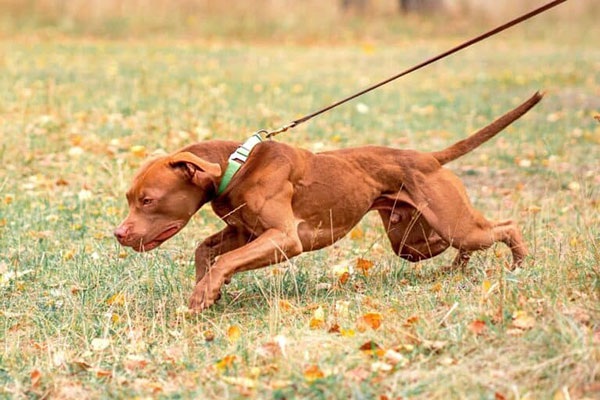
As a veterinary professional with expertise in canine health and fitness, I’d like to offer a comprehensive guide on how to safely and effectively build muscle mass in your Pitbull. Building muscle in dogs, much like in humans, should be approached with a focus on health, safety, and overall well-being.
1. Balanced Diet
- High-Quality Protein: The foundation of muscle growth is protein. Ensure your Pitbull’s diet contains high-quality animal proteins from sources like chicken, beef, fish, or lamb to support muscle repair and growth.
- Adequate Fat: Healthy fats are essential for energy and the absorption of certain vitamins. Include sources of omega-3 fatty acids, which can also support joint health.
- Controlled Carbohydrates: Carbohydrates provide energy for your dog’s daily activities and workouts. Opt for complex carbohydrates such as sweet potatoes and brown rice.
- Vitamins and Minerals: A well-balanced diet should also include the right blend of vitamins and minerals. Sometimes, a veterinary-approved supplement might be necessary to meet your dog’s nutritional needs.
2. Regular Exercise
- Structured Exercise Plan: Incorporate a mix of activities that promote both cardiovascular health and strength. This could include brisk walking, running, swimming, and agility exercises.
- Weight Training: Yes, dogs can do weight training too! Using weighted vests during walks can help build muscle. However, it’s crucial to start with very low weight and gradually increase it to prevent injury.
- Playtime: Activities such as tug-of-war and fetch can also contribute to muscle development, ensuring your dog stays engaged and enjoys their workout.
3. Adequate Rest
Muscle growth occurs during rest periods, not just during physical activity. Ensure your Pitbull gets plenty of sleep and has days off from intense exercise to recover and build muscle.
4. Regular Health Check-ups
Monitoring your dog’s health is crucial when increasing their physical activity. Regular check-ups with your veterinarian can help catch any potential issues early and ensure your dog is healthy enough for increased exercise.
5. Hydration and Cooling Down
Always provide fresh water, especially during and after workouts. Cooling down after exercise is just as important for dogs as it is for humans to prevent muscle stiffness and overheating.
6. Caution with Supplements
While some supplements can benefit, it’s important to proceed with caution. Consult with a veterinarian before adding any supplements to your dog’s diet, as some can be harmful or unnecessary.
Building muscle in your Pitbull should always be about promoting health and vitality rather than achieving a certain look. By focusing on a balanced diet, regular exercise tailored to your dog’s capabilities, and maintaining their overall health through veterinary care, you can help your Pitbull develop strong, healthy muscles safely.
Homemade Diet for Muscular Pitbull
Crafting a diet at home for your Pitbull can be both rewarding and beneficial, provided it’s done with careful consideration of nutritional needs and under professional guidance.
The Basics of Canine Nutrition
Before embarking on a homemade diet, it’s crucial to understand the basic nutritional requirements of dogs. Canines need a balanced intake of proteins, fats, carbohydrates, vitamins, and minerals. Proteins are essential for muscle growth and repair, fats provide energy, carbohydrates supply fiber for digestive health, and vitamins and minerals support various bodily functions.
Advantages of a Homemade Diet
- Control Over Ingredients: Homemade diets allow you to select high-quality, whole-food ingredients, avoiding fillers and additives found in some commercial dog foods.
- Customization: You can tailor the diet to your Pitbull’s specific health needs, preferences, and any food sensitivities.
- Freshness: Freshly prepared meals can be more palatable and digestible for your dog.
Considerations for a Homemade Diet
- Nutritional Balance: The most significant challenge in homemade diets is ensuring the meal is nutritionally complete. An imbalance can lead to deficiencies or excesses, harming your dog’s health.
- Time and Cost: Preparing balanced meals daily requires time and can be more expensive than commercial diets, especially if opting for premium ingredients.
- Supplementation: Certain nutrients, like calcium, are hard to adequately provide through whole foods alone. Supplements may be necessary to ensure a balanced diet.
Implementing a Homemade Diet Safely
- Consult a Veterinary Nutritionist: Before switching to a homemade diet, consult with a veterinary nutritionist. They can help formulate a balanced diet specific to your Pitbull’s needs.
- Use Balanced Recipes: If you’re preparing meals yourself, follow recipes designed by veterinary nutritionists to ensure they meet your dog’s nutritional requirements.
- Monitor Your Dog’s Health: Regular check-ups are essential to monitor the effects of the diet change. Pay attention to your dog’s weight, coat health, energy levels, and stool consistency.
- Transition Slowly: Gradually introduce the homemade diet over several days to avoid digestive upset.
Is It Safe and Effective?
A homemade diet can be both safe and effective for Pitbulls when done correctly. The key is ensuring the diet is balanced and tailored to your dog’s individual needs. Missteps in nutritional balance can lead to health issues, making professional guidance indispensable.
Homemade diets offer a way to closely manage your Pitbull’s nutritional intake, potentially leading to improved health outcomes. However, they require a commitment to learning about canine nutritional needs and working with veterinary professionals to ensure the diet’s safety and effectiveness. With the right approach, a homemade diet can be a healthy choice for your Pitbull.
How to Build a Pitbull’s Jaw Muscle
Building a Pitbull’s jaw muscle can be part of a broader approach to strengthening and conditioning your dog. However, it’s essential to approach this with a focus on overall health and safety, ensuring that exercises are beneficial and not harmful. Here’s a guide designed with a veterinary perspective on safely enhancing your Pitbull’s jaw strength:
1. Understand the Need
First, it’s important to recognize why you’re focusing on jaw muscle development. For many Pitbulls, having a strong jaw is a natural trait. Any exercise aimed at strengthening the jaw should be for health and enrichment purposes, rather than encouraging aggression or for competitive reasons.
2. Start with a Health Check
Before beginning any new exercise regimen, consult your veterinarian. It’s crucial to ensure that your Pitbull is in good health and that jaw-strengthening exercises are safe for them, considering their age, health status, and any existing conditions.
3. Safe Chew Toys
- Durable Toys: Invest in high-quality, durable chew toys that can withstand heavy chewing without breaking apart. Toys made from hard rubber or nylon are typically good choices. These allow your dog to exercise their jaw muscles safely while enjoying playtime.
- Interactive Chew Sessions: Engage with your dog by holding the chew toy, allowing them to pull and tug against your grip. This controlled activity not only strengthens the jaw but also fosters bonding.
4. Tug-of-War Games
Playing tug-of-war with a sturdy rope or a durable toy can significantly enhance your Pitbull’s jaw strength. Ensure the game is always controlled, stopping if it becomes too aggressive or competitive, to keep the activity positive and safe.
5. Feeding Raw Bones
Under supervision, and with veterinary approval, raw bones can be a natural way for dogs to strengthen their jaws. Ensure the bones are large enough to prevent swallowing whole and are appropriate for your dog’s size. Avoid cooked bones, as they can splinter and cause internal damage.
6. Training and Commands
Incorporate training sessions that require your Pitbull to hold, carry, or retrieve objects. This can include commands to ‘hold’ a toy in their mouth, which can indirectly work the jaw muscles as they learn to grip objects gently but firmly.
7. Regular Vet Visits
Monitoring your dog’s dental health and jaw development through regular veterinary check-ups is crucial. This ensures that any exercise regimen does not adversely affect their overall well-being.
8. Avoid High-Impact Toys
Steer clear of excessively hard toys, such as antlers or bones that could break teeth. The goal is to build muscle without causing dental damage.
9. Observe Your Dog’s Behavior
Pay attention to any signs of discomfort or disinterest from your dog during these activities. Jaw exercises should be enjoyable and not cause stress or pain.
Conclusion
Building your Pitbull’s jaw muscle should be part of a balanced approach to exercise and play that supports their overall health and happiness. Always prioritize safety, consult with a professional, and ensure that activities are appropriate and enjoyable for your dog. Remember, the goal is to enhance your dog’s physical condition and enrich their life, fostering a healthy, strong, and happy Pitbull.
#muscular Pitbull, #pitbull muscle mass
References
To ensure the accuracy and depth of information regarding American Pitbulls, the following sources were consulted. These references offer further reading and verification for those interested in the breed’s characteristics, history, and care.
- American Kennel Club (AKC): While the AKC does not officially recognize the American Pit Bull Terrier, it provides extensive information on similar breeds like the American Staffordshire Terrier.
- United Kennel Club (UKC): The UKC is one of the few major kennel clubs that recognize the American Pit Bull Terrier. Their website offers detailed breed standards and history.
- ASPCA: The American Society for the Prevention of Cruelty to Animals offers insights into the temperament and care requirements of American Pitbulls.
- PetMD: PetMD provides valuable information on the health, diet, and training needs of American Pitbulls, helping owners to keep their pets healthy and happy.
- Veterinary Centers of America (VCA): VCA offers comprehensive care guides for American Pitbulls, including common health issues and preventive care.
By consulting these reputable sources, you can gain a deeper understanding of American Pitbulls, their unique traits, and how to provide the best care for these loyal and powerful dogs.

